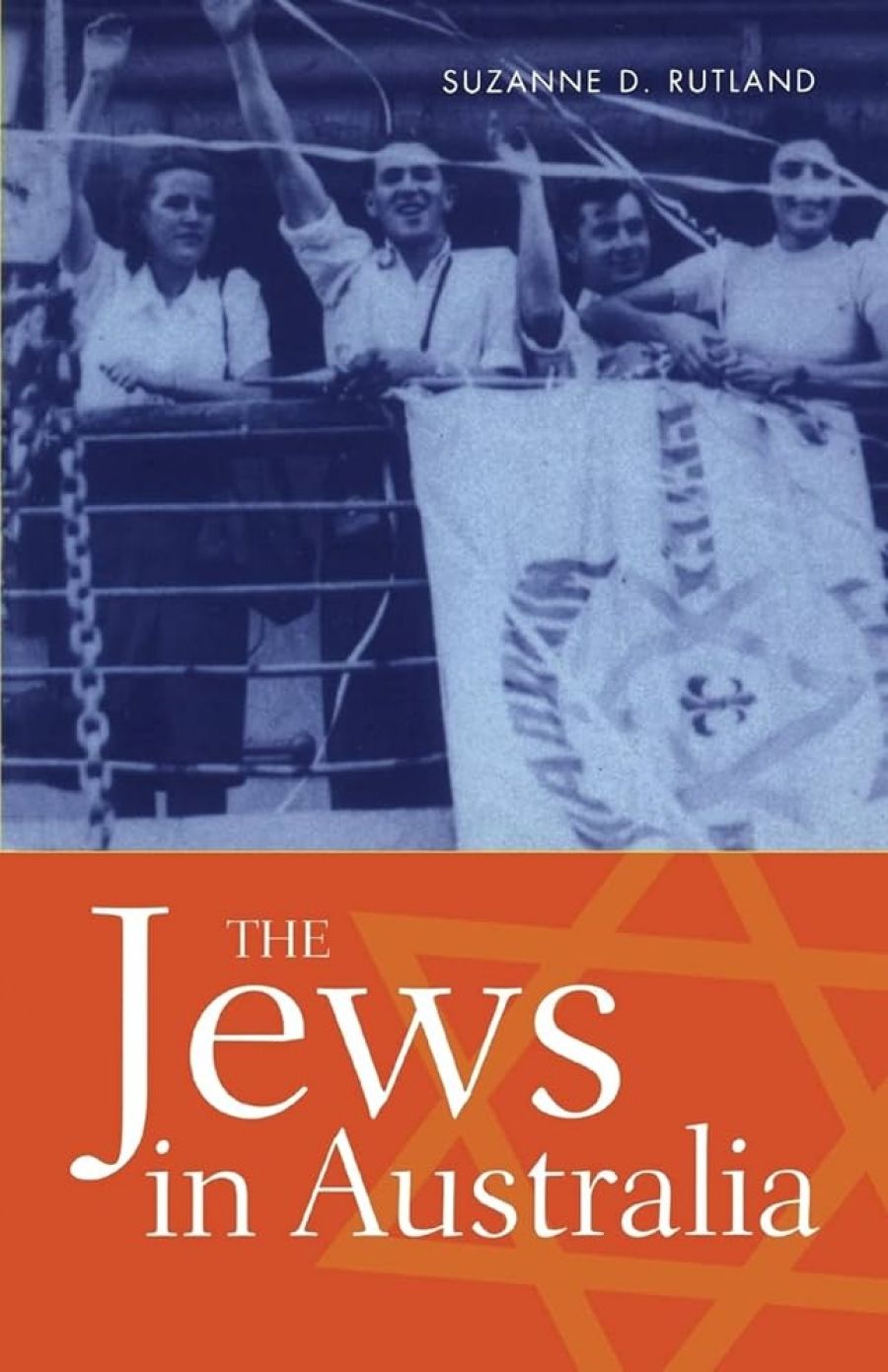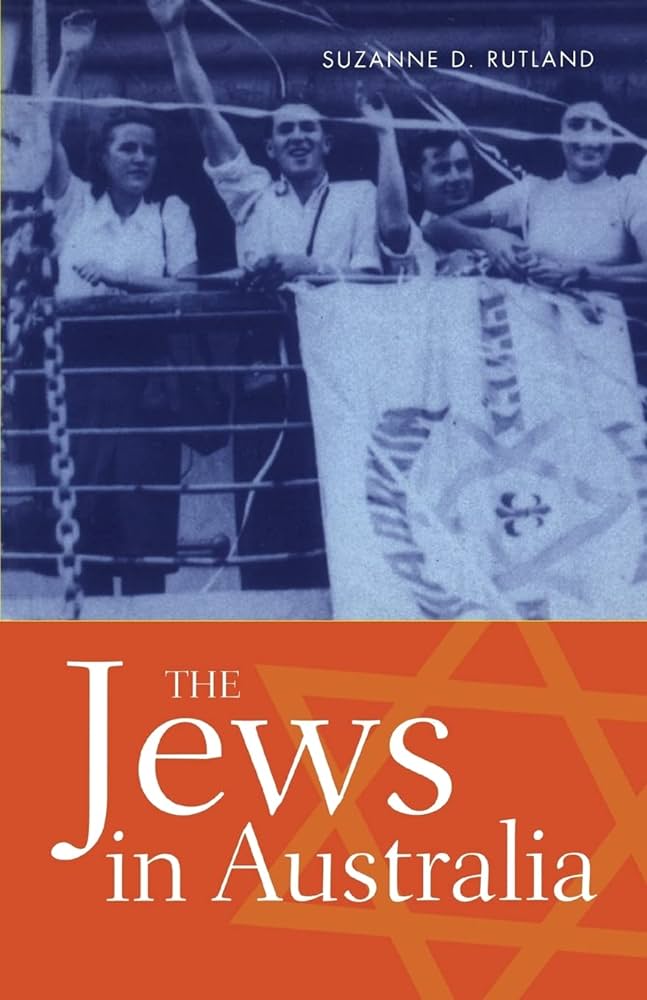
- Free Article: No
- Contents Category: Jewish Studies
- Review Article: Yes
- Article Title: The age-old question
- Online Only: No
- Custom Highlight Text:
It is one of the ironies of Jewish life in Australia that it is at once thriving and dying. The Jewish community drew its contemporary renaissance from the influx of postwar Jews from major centres in Eastern Europe, which were annihilated by the Nazis and their collaborators. Mostly victims of anti-Semitic persecution, the immigrants of the 1930s to 1950s brought a deep awareness and love of their culture and religious practice to an agreeable Australia, bolstering a Jewish community which to that time was predominantly British in origin and largely assimilationist. As Suzanne Rutland points out, in what is essentially a book of record, the immigration from Eastern Europe revitalised Jewish life in Australia.
- Book 1 Title: The Jews in Australia
- Book 1 Biblio: CUP, $39.95 pb, 212 pp
- Book 1 Cover Small (400 x 600):

- Book 1 Cover (800 x 1200):

Jews arrived in Australia with the First Fleet. These early arrivals, as Rutland states, integrated into the social and commercial life of the colony. The first Jewish burial society was established in Sydney in 1817, and the oldest known Jewish tombstone dates back to 1828. The first torah scroll was brought to Sydney in 1831, and the first purpose-built synagogue established in 1844, in Bridge Street, Sydney. Then followed the foundation of Jewish communities in other colonies, as they were established – the next being in Tasmania. Among a number of interesting facts, Rutland notes that Ikey Solomon, said to be the prototype for Dickens’ character Fagan, was for his sins transported to Tasmania.
The Jews of Melbourne became involved in the clothing business from an early stage in the development of the city. Melbourne’s first synagogue, in Bourke Street, was founded in 1848. From these long-established roots, Jews have been the best-established and best-integrated non-WASP/Catholic community in Australia.
Rutland’s book gives a most accessible account of this story, outlining research that she has been engaged in since 1968 and in respect to which she is one of Australia’s pre-eminent scholars (and currently Chair of the Department of Hebrew, Biblical and Jewish Studies at the University of Sydney). From a Jewish perspective, as Rutland shows, Australia has provided a model home, where Jews – with their rich tradition of achievement in learning, and with the immigrant’s will to succeed – have settled comfortably. Jews have risen to the highest positions in public office, including governors-general (Isaac Isaacs and Zelman Cowen), and the head of the armed forces during World War I (John Monash). As Rutland notes, Monash – and Leon Trotsky – are the only Jews to have commanded armies outside of Israel. Would a Jew be accepted as an Australian prime minister? Unlike Britain’s Conservative leader Michael Howard and US vice-presidential candidate Senator Lieberman, none has come remotely close.
Topically, Rutland draws attention to the strength of anti-immigrant feeling at the time of the European migration of the 1930s and 1940s in particular, and which included ‘anti-ref’ sentiment among sections of the Jewish establishment of the day. A group of newly settled Jewish immigrants led the way in persuading the Australian government (in particular, the postwar Labor government, and Immigration Minister Arthur Calwell) to rise above popular prejudices, and succeeded in ensuring that Australia took in the highest number of Holocaust survivors (per head of population) of any country after Israel. A leader in these efforts was Leo Fink, himself a Polish Jewish immigrant, who helped establish the United Jewish Overseas Relief Fund which sponsored Jewish immigrants to Australia and ensured that the Jewish community took financial and social responsibility for newly arrived immigrants. In the case of my own family, the Fund provided a loan that enabled them to buy a house and set up a business within a short time of arriving from Poland in 1951. The governmental support for Jewish immigration was strongly continued under the Liberal government of the 1950s and, in particular, under the then Immigration Minister, Harold Holt. The Jewish communal infrastructure has prospered over the years, in particular the successful establishment of major Jewish day schools (notably, Mount Scopus College in Melbourne), which have provided the key focus for the Jewish education of a largely secular community. Rutland’s account of these events is carefully detailed.
The close attachment between the contemporary community and Israel is of critical importance. For many Australian Jews, Israel is the cultural wellspring of modern Jewish life, and is regarded as the ancestral home (just as many other Australians identify with ancestral homes such as Britain or Ireland). The terrible war years generally ended any similar identification for Australian Jews with the pre-war homes of their parents or grandparents in Eastern Europe or Germany. New York, as the major Jewish centre outside of Israel, also has a special status for many Australian Jews, but does not match Israel or the Hebrew language.
Against this backdrop, Rutland looks at the age-old Australian Jewish question: can a Jewish community survive in Australia? The demise of the community has been predicted repeatedly from the time of its inception. Have the sceptics got it right this time? The factors working against the Jewish community at the present include the falling Jewish birthrate, high levels of intermarriage, migration to Israel, the absence of any substantial revitalising immigration, the secularisation of the mainstream Jewish community, and the general muting of communal identity as post-multiculturalism sets in.
Rutland resists making predictions, but the story of achievement and integration that she relates leads inevitably to the unsettling question as to whether the enthusiasm of Jews for their own identity is in fact currently under its most serious challenge since the postwar period.


Comments powered by CComment